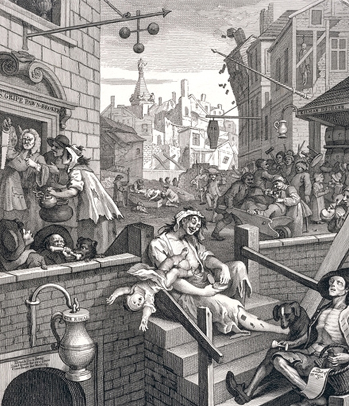Andrew Graham-Dixon on four centuries of satire in Bolton Art Gallery's 'Folly and Vice'
BOLTON Museum and Art Gallery's main contribution to the festive season, 'Folly and Vice: The Art of Satire and Social Criticism', has been doubling as an antidote to it - a concerted assault, in around 130 im-ages spanning some four centuries, on drunkenness, lust and just about every other form of excess you can think of.
Drunkenness is a traditional satirist's target, the perfect opportunity to denounce and entertain at the same time. Hogarth's Gin Lane is both familiar and exemplary, a grimly evidential scene of disaster and af-fray. Depravity is writ large in the figure of that famously unkempt lady of the road, who lolls in an alcoholic stupor blissfully unaware that her baby is plummeting head-first down an adjacent stairwell. In Hogarth, every detail counts, from the blind and staggering cripple reeling under the blows of a drunken assailant to the suicide glimpsed through the dilapidated wall of a row of teetering houses; even the architecture, in this catalogue of the nation's alcoholic woes, is inebriated.
Hogarth, the first great exponent of graphic satire in English art, had the perfect mentality for it. Predicting Gillray or Rowlandson, the Hogarth print characteristically crawls with detail. The English satirist indicts the world by turning it into a courtroom of global dimensions: everything and everyone is an exhibit, guilty by definition. Pity doesn't come into it: Gillray's prostitute, alone in her bedchamber, elaborate coiffure at odds with her ragged nakedness, is mercilessly observed.
This is an exhibition made up of bits and pieces, disconnected effusions of spleen. But it is held to-gether, at least to an extent, by the constancy of satirical subject matter - follies and vices don't change much over the centuries - and by...


